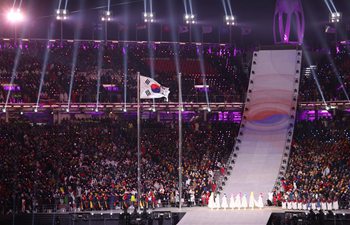BERLIN, Feb. 12 (Xinhua) -- The widely-criticized gap in earnings between men and women differs significantly by region in Germany, the newspaper "WELT" reported on Monday.
"WELT" cited an ongoing study by the Institute for Employment Research (IAB) in Nuremberg which disaggregated the average national gender-pay-gap according to smaller regions within German states.
IAB researchers are currently evaluating data compiled by the Federal Labor Office for 2016 and will publish a final report in the fall. Nevertheless, the institute told "WELT" that some preliminary conclusions could already be made.
For example, men in the Bavarian region of Dingolfing-Landau earned 38 percent more on average than women, while women's salaries were 17 percent higher on average than those of men in Cottbus, Brandenburg.
Notably, however, the difference was almost entirely accounted for by the poverty of men in Cottbus compared with their counterparts in Dingolfing-Landau, while female incomes in both regions were nearly equivalent.
"Where men earn less, there is a tendency for the pay-gap to be more favourable towards women," a statement by IAB read. It would hence appear that the availability of certain professions for men was a significant determinant of how much wages diverged between men and women.
Cottbus was illustrative of this point as the region was distinguished by a scarcity of well-paid industrial jobs and high unemployment.
By contrast, the regions which had the highest gender-pay-gap, such as Ingolstadt (36.9 percent) and Boeblingen (35.9 percent), were usually home to high-value-added manufacturing concerns.
"These are all regions which have specialized in certain areas," IAB told "WELT".
Luxury-carmaker Audi has its global headquarters in Ingolstadt, while rival German automotive firm Daimler, U.S. IT-corporation IBM and Dutch technology company Philips all have production facilities in Boeblingen.
Worryingly, the findings suggested that such regional economic structures were more beneficial to men than to women. Several scientific studies have suggested that cultural attitudes play a highly-significant role in influencing the choice of a future career by young girls. As a consequence, many male-dominated sectors such as the IT industry have launched initiatives to revamp their image and attract more female employees.
Overall, the IAB estimated that the average national gender-pay-gap in Germany was 14 percent in 2016. Accounting for part-time employees as well, the Federal Statistical puts the figure higher at 21 percent.

















